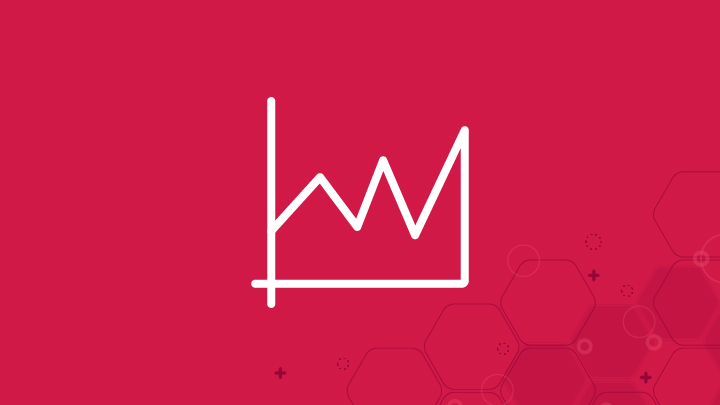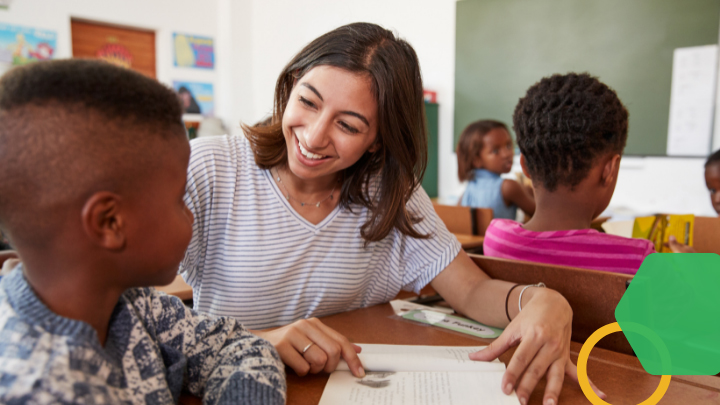Teachers have become experts at collecting data, both formative and summative, in the classroom. Data alone, though, is just a set of numbers, percentages, and graphs that have little to no impact in the classroom. Utilizing the data to shift instructional practices should inform and drive every aspect of education in the classroom. Here are some things we know and believe about data at BetterLesson:
- Data should not only inform teachers of student mastery and knowledge; it should be the driving force of instruction.
- Data should help the teacher and students identify growth areas and areas of understanding and mastery.
- Data should inform how, what, and when a teacher teaches.
- Data should help determine collaborative groups, small group instruction, and peer tutors.
But how do you begin using data to drive instruction and teaching practices? Here are some suggestions:
Decide on consistent ways to gather data.
Polling the class
Data should be gathered regularly throughout lessons and units through formative, informal, and summative methods. Polling the class is a great formative assessment strategy that can be used not only to gather formative data on students, but to help students learn how to justify their answers based on the data.
Mastery-based classroom
If you’re moving towards mastery-based grading classroom structures, the strategies Pre-Assessing with a Purpose and Creating a System of Assessments to Demonstrate Mastery can help you begin to create and embed data-gathering assessments into your mastery-based classroom design.
Exit tickets
Exit Tickets have also proven to be a great tool to use for gathering formative data on students. Exit Tickets provide flexibility in delivery and grading as well. Technology enhanced assessments combine tech tools with formative assessments to provide teachers with immediate data and feedback in regards to student performance. Try using tech tools Socrative, Google Forms, or Quizizz to have students complete exit tickets or formative assessments digitally. For example, in the BetterLesson Master Teacher Project lesson, “Volume of Rectangular Prism,” by 6th Grade Math teacher Ursula Lovings exit tickets are used not only to assess students’ understanding of the volume of rectangular prisms, but also to determine individual students’ homework assignments and practice activities based on the data gathered from the exit tickets.
Shift instructional practices to support individual students’ needs.
Shifting instructional practices based on data can take on several forms: grouping students into cooperative learning groups based on the data, providing students with leveled work and activities, or small group instruction and remediation.
If you are new to using data to differentiate in the classroom, begin by exploring BetterLesson’s Differentiated Lesson Planning strategy. Differentiated lessons can help meet students’ specific learning needs and abilities.
Data can also be used to group students collaboratively or for small group instruction. Try the Mild, Medium, and Spicy Grouping strategy for a systematic approach to grouping students based on formative assessment data.
Build student agency and choice in the classroom using data.
Data can also be used to build student agency and choice in the classroom. You can start by having students begin to self-monitor and assess their own data to make choices about their learning and academic growth.
Fill in the Gaps
Fill in the Gaps is a great strategy to use to introduce students to the idea of self-assessing through the use of data as it allows students to review their own formative assessment data in order to assess their strengths and weaknesses and then set goals for improvement in their personalized work plan over the course of several days. Learn more about getting students on board with self-assessment here.
Yoda Master
If you are looking for a self-paced approach to student self-assessments and mastery-based progressions, try the Yoda Master Self-Paced Assessment strategy. In this strategy, students review their data to identify a skill that they have not yet mastered. Once students have identified a skill, they create a playlist plan to learn, practice, and re-assess mastery of the skill.
Choice Boards
Using Choice Boards is also a great way to incorporate student ownership into a data-driven classroom. Choice boards increase student ownership and provide teachers with opportunities to differentiate and support students at their individual learning levels based on data.
Utilize data to drive real-time feedback
More than just recognizing the importance of consistently gathering student data in the classroom, the shift has to be around utilizing data in an individualized, student-centered way. Data should drive both real-time feedback and regular instructional changes to support every child at every level. Students should be receiving feedback both from their peers and from their teacher. The teacher has the responsibility of helping students understand their data, areas of growth, and recognizing specific areas they have mastered. One way to provide students targeted feedback is by micro-grouping to provide feedback. Micro-grouping allows the teacher to form small groups of students who need similar feedback or that could be given feedback in a similar manner. Micro-groups are flexible in design to meet the needs of the teacher and students.
Data should be the force for informed instructional decisions in the classroom for both the teacher and the students. Remember that gathering and using data to shift instruction will be a regular, ongoing process, that requires consistency and reflection from the teacher. Ultimately, data should help you understand and support your students individual needs, academic achievements, and areas of growth.
To learn more about the ways BetterLesson can help you take a data-driven approach in your school, contact BetterLesson today.







